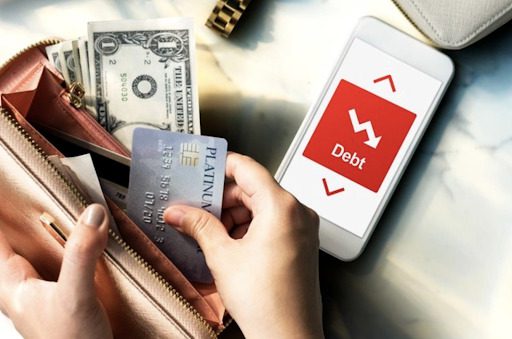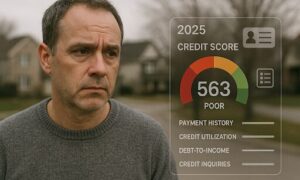Declaring bankruptcy is a never-to-be-forgotten lesson. The hustle involved when filling the bankruptcy petition and the long period it takes to clear the negative information from your credit history could make you think twice. The hard choice could result from the termination of employment, medical conditions, or your financial situation drops beyond your control.
How long does chapter 7 last on the credit report?
In Chapter 7 bankruptcy, The creditors will remove the accounts the bankruptcy tag ten years from the date you made the big decision. The good thing is that you can fasten this process. You do not have to wait for seven years for the automatic procedures necessarily. It gives you enough time and space to restructure financially and free your credit score. It is also known as liquidation bankruptcy.
When filing for Chapter 7 bankruptcy, you will not pay debts such as car loans, medical fees, credit cards, and personal loans. However, you will sell some of your property to cover secured loans.
How long does chapter 13 last on credit report?
For chapter 13 bankruptcy, the waiting period for a good credit score could reach up to 7 years. Within this period, you will not be able to enjoy some privileges such as personal and car loans and mortgages. However, you will not have to pay any debts that you owe.
When you file Chapter 13, you will choose a repayment plan that exceeds four years. All the debts listed will discharge when you make the final monthly payment.
According to United States bankruptcy laws, it is impossible to lend a bankrupt person because they do not guarantee.
Whichever type of bankruptcy that you declare, you should have in mind that financial advisors recommend chapter 13 over chapter 7. In chapter 13, you can reduce some workload and repay what you owe.
Where does bankruptcy appear on your credit report?
Bankruptcy affects how the public views you. It will show in your TransUnion credit report section. The credit card companies will notify officials and add the financial institutions and your bank account information. If you have any accounts that officials may not have included in the listing, then your creditors can start a legal process and have them blocked.
Mistakes happen, and your name could land on the bankruptcy section, but there is no need to panic. Within hours it should be rectified by officials.
How to remove bankruptcy from your credit report

It is easy to be bankrupt. You will send your details through an online application. The negative information will automatically be discharged once the period elapses. Officials will rectify your profile on your account information; all you have to do is wait.
The bankruptcy will end on the exact date, 7 or 10 years from when you made the decision.
How to rebuild your credit score after bankruptcy
It would help if you began to think about life after bankruptcy at some point. How you enter this phase will be determined by how well you utilize the ten years. It is possible to rebuild your damaged credit score; here are some tips.
1) Credit reports review
Regular assessment of your credit history will keep you vigilant and make you spot any anomalies or errors that appear out of trend. Financial advisers recommend going through your credit history plan better and being more prepared to handle emergency events.
Credit companies have set up a feedback system that receives complaints concerning suspicious activity in the credit history.
You should check for the following;
- All accounts discharged upon completion of bankruptcy indicate that they have zero balance. Check the profile; it should be showing.
- Confirm if all the accounts are yours. Take a look at the payment status and dates.
- After completing bankruptcy, you should check your accounts to see if they are marked as discharged. The profile should state that default termination is because the period has naturally ended. Their balances should also be zero.
- There is always room for a mix-up of account information. Check the account numbers to confirm if they are the ones that you opened. You can counter-check the dates opened and closed to see if it matches your records.
2) Honor all payments
Your fico score should be a priority at such a point. Your payment history should indicate that you have a repayment plan or never miss payments. It will determine over 30% of your credit score, so it would be best if you avoided late payments and paid all your loans.
3) Low Credit Ratio Utilization
To maintain a good Fico score, you have to monitor your spending habits compared to the income and what you own. After some time, it will not matter how long bankruptcy stays on credit; it is advisable to spend within your means to shield from bankruptcies impact.
4) Secured Credit card
Through practice, you will learn how to gain control over your money. A secured credit card will help you to do this. You will make a security deposit that will stipulate your limit.
The credit card companies inform three other financial bureaus when you make monthly payments. Other than building trust, it also improves credit scores.
5) Authorized user
As per law.cornell.edu, even though it may be challenging to get the traditional credit card after completing bankruptcy, you can request to be signed as an authorized user in someone else’s. If the credit history is impressive, your credit score rating will improve. However, it would be best to prepare well because you will also blame the owner for defaulting on a loan. You will also pay for it when they eventually max out their cards.
Bottom line
When you declare bankruptcy, Financial institutions will record your details. When you search online, you will be able to find them. It should not trouble you as long as you keep a good credit score moving forward. Some lenders rarely take their time to check in the gazette.

































